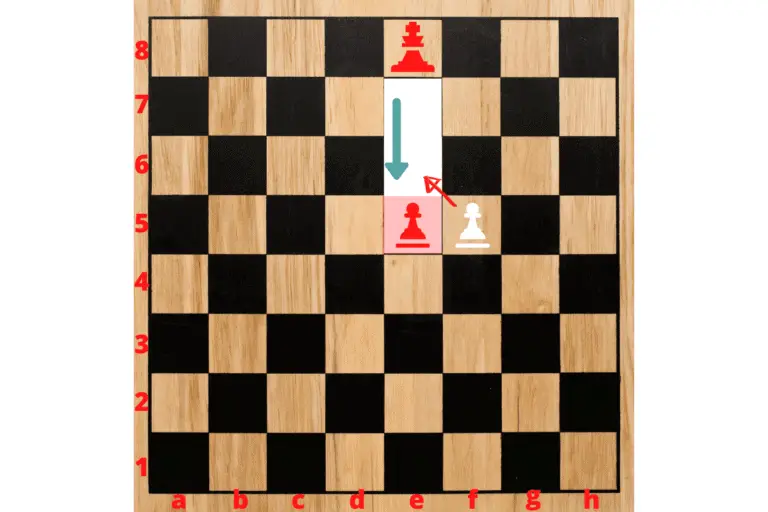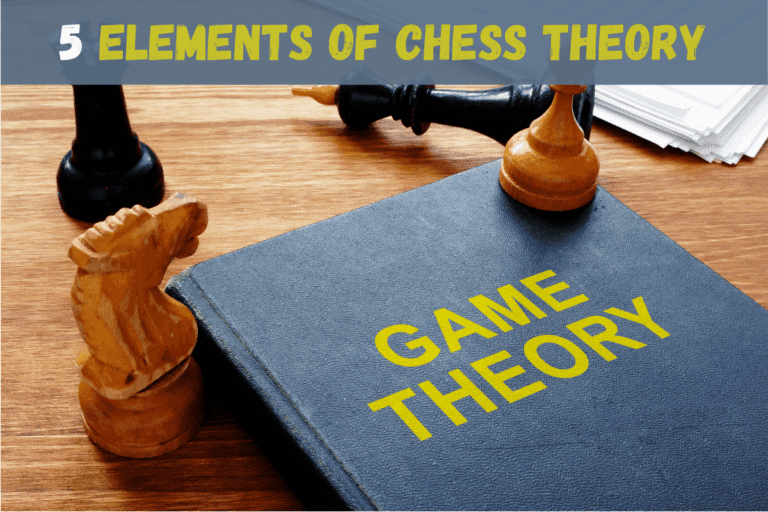Can You Castle Out of Check? A Chess Explanation
⭐⭐⭐ Take 4 minutes to read and improve your chess game ➡️ : This article was first published on, and is Copyright of Chessquestions.com
In this post, I take a look at the rules of castling in chess when in check and explain why it is not possible to castle out of check. I will also provide links to more in-depth explanations of these rules so that you can learn even more about this fascinating game and special moves and fascinating game of chess.
The full “how to castle in chess” article covers much more than this post
Can You Castle out of Check?
As per the FIDE Laws of Chess a player is not permitted to castle out of check positions. If the king is attacked by an opposing piece the right to castle and move out of check is lost. The king has to make a move out of the check or another piece should block the check attack.

You can also not castle should the King have to move through a position in which it would be check

Can I Castle After Getting out of Check?
So long as the check has been blocked by another piece, and the Rook nor King have been moved then you retain the ability to make a subsequent check. In fact, if you can do so, this might be the very optimum time to move your king to safety with a castle move, if castling remains an option.

The fact remains however that if Castling on either side of the board would pass the king through a check position or into a check position, then still castling would not be an open option.
What is castling in chess
Castling is an important strategy in chess, involving moving two pieces at the same time, the King and the Rook.
Either on the Kingside or the Queenside the King and Rook can jump over each other, a move that is generally used in chess openings to place the king in a more safe and secure position.

This can be a very effective way of protecting one’s king while also gaining an advantage on the board by bringing one’s rook into play more quickly. However, there are some important caveats to keep in mind when casting.
For example, it is not possible to castle out of check, so a player can’t try to use castling as a way of getting out of trouble.
Overall though, castling can be a powerful tool for strategic play in chess, allowing players to keep their kings safe while also developing and connecting the rooks so long as the ability to do so has not been forfeited.
The rules of castling in chess
It can be difficult to master all the rules of chess, and one that can be super helpful and must be learned is called “casting”.
While this maneuver can seem complicated at first, there are a few key rules that can help you understand it better. For example, you can only castle if the king is not in check nor would it pass through a check position.
How you can move a rook out of danger with castling
When playing chess, it is inevitable that at some point your rooks may come under attack.

While you are not permitted by the rules to make the castle move to get your king out of check and away from an attack, so long as the King does not pass through a check position in doing so, you can move your Rook away from an attack with the castle move.

The example above is not a perfect outcome, but you can see in simple fashion how the Rook is more mobile than if it had simply moved one square to the left and become trapped with the king in the way.
Very handy, and often forgotten at the time, this can be an excellent move and a very aggressive and attacking nature to it.
So if you find yourself in a situation where your rook is in danger, castling may be just what you need to move it out of harm’s way. With careful planning and an expertly executed castling move, you can keep your rook safe and help to strengthen your overall game strategy!
Tips for improving your castling game play
- First, you can only castle if neither your king nor rook have been moved during the game.
- Second, there cannot be any pieces between your king and rook.
- Third, you cannot castle if your king is currently in check or if castling would put your king in check.
- Finally, you cannot castle if the square your king would pass through is under attack by an enemy piece.
Keep these tips in mind next time you play and you’ll be sure to see an improvement in your game!
Other Articles you Might be interested in.
I have selected these article, which I think you will also find interesting in building your knowledge of some of the nuances and specials moves in chess
Knight Outposts
Occupying a strategic square, known as an outpost can be an aggressive and effective way to put your opponent under attack
How to Never Lose a Game of Chess
Can you be unbeaten in chess? Imagine there was one perfect strategy that meant you could never lose. Quite different from winning every game, this article explains what I mean.
The Skewer
A form of pin, a ‘reverse pin’ in this instance, the skewer can be a super effective way of winning material by pinning a high-value piece against a lower value piece, ensuring the capture of one or the other on your next move.
En Passant
The most forgotten chess move of them all, and sometimes, the most devastating, En passant is a very special move that can be performed by a pawn, but only at a certain time within a game. Miss the chance and it’s gone forever, lean all about En Passant along with when and how to play it in this guide.










